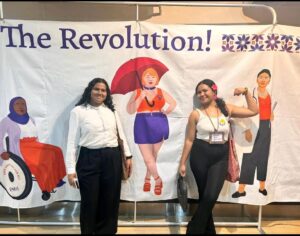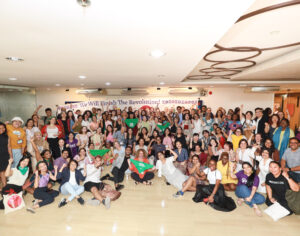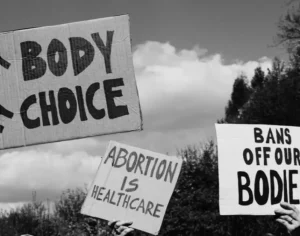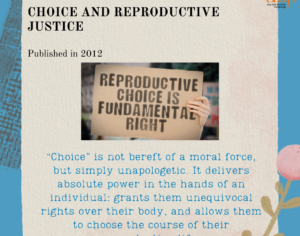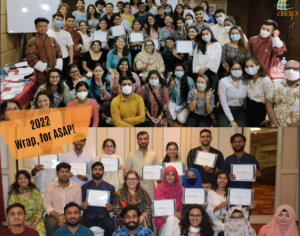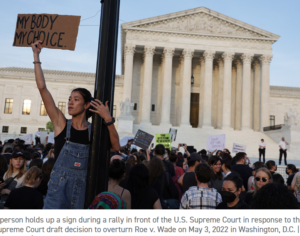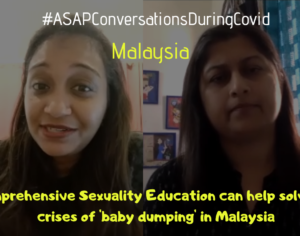Recognizing the Need to Promote the Reproductive Rights of Teens
On September 22, The Star, a leading English Language Newspaper in Malaysia published an article highlighting the high incidence of teen pregnancies in Malaysia, and the burden it poses to the health of the young girl. However the article, One Teen Birth Every Day, did not address the options a pregnant teen has.
Dr. SP Choong, ASAP Steering Committee Chair, and Co-Chair of the Reproductive Rights Advocacy Alliance of Malaysia wrote a letter to the editor, which was published today in The Star.
We also decided to publish it on our blog, as it reminds us of the goals of the International Campaign for Women’s Rights to Safe Abortion, and the steps we need to take to help reduce maternal deaths worldwide.
The Editor,
Star Publications.
2 Oct 2012.
Dear Editor,
Sub: Teen pregnancies in Malaysia: National and International Implications.
We refer to your headline highlighting the problem of our rising teen pregnancy rates amounting to over 18,000 in 2011. (Star; 22/09/2012). These statistics are a terrible indictment on the quality of our reproductive health policies, especially relating to teen girls.
What teen pregnancies really mean:
Solving this problem should be a priority if we realize the impact a teen pregnancy has on any girl’s future potential. Usually, this means an abrupt end to her education, affecting future job opportunities and a fulfilling career. Instead, this teen mom would go into a ‘shot-gun’ marriage under duress, which, in all likelihood, will not last.
Thus the fact that about 1/3 of these teens concerned are ‘married’ does not mitigate the fact that her future options are severely limited in comparison to her peers in school.
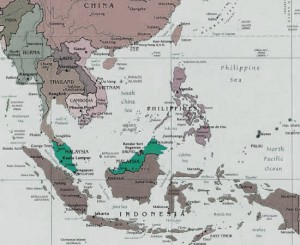 Looking at the Options:
Looking at the Options:
We all know that when a teen gets an unintended pregnancy, probably comprising 99% of all teen pregnancies, she would be faced with 4 options.
They are
a) Keep the pregnancy, and get the child adopted (baby hatch is a help)
b) Keep the pregnancy, get married to the father under duress,
c) Seek an induced abortion that is hopefully safe and affordable
d) If all options are closed, in desperation, ‘dump’ or kill the baby at birth.
Society’s Failures:
The society and the authorities must recognize the reality in the options these girls face once they become pregnant.
Unfortunately, the authorities have failed these young girls in several areas. These are:
a) Sex education in schools is still weak, usually emphasizing abstinence and ignoring contraception, abortion and STIs.
b) Our youth health services still have negative views about giving advice on and providing contraception to singles.
c) Finally, safe abortion services, which are legal and available, are still difficult to access because of the continuing perception that it is an illegal procedure. This is despite an amendment to the penal code made in 1989. Abortions are not available in most public hospitals but commonly only available in private medical facilities, often as a clandestine procedure, sometimes at exorbitant fees.
The Millennium Development Goals and the UN:
Malaysia is committed to achieve the Millennium Development Goals to be achieved by 2015 and agreed upon by all UN members at the Millennium Summit in 2000. Among the indicators used to measure progress is goal 5b, which is a 50% reduction in teen pregnancies in the country, recognizing the negative impact it has on a girl’s life. Unless we address the weaknesses above we shall definitely fall short of achieving this goal.
However, even in countries with the best sex education and contraceptive services, the need for abortion services remains a reality. A perfect contraceptive method has not yet been discovered and there are many other reasons why unintended pregnancies continue to occur.
National and Regional realities:
Demographic experts have estimated the number of abortion in Malaysia as between 90 – 100,000. And worldwide studies estimate that more than 40% of all pregnancies are not planned and 1/3 of these seek an induced abortion.
Unfortunately, in most of Asia, poor access to safe abortions continues due to multiple factors like legal obstacles, high fees or inadequate facilities. Thus of the 44 million abortions done annually worldwide, almost half are considered ‘unsafe’ resulting in 47,000 deaths annually.
Global Campaign for Rights to Safe Abortion:
Women’s rights groups around the world are now fully recognizing the negative impact unsafe abortions have on women’s lives, and have now gotten together to declare September 28th as an annual date for the International Campaign for Rights to Safe Abortion.
The Reproductive Rights Advocacy Alliance of Malaysia (RRAAM) and The Asia Safe Abortion Partnership (ASAP) are running petitions for the campaign on our websites, and a blog in solidarity with our partners around the world to support the event at www.rraam.org and www.asap-asia.org.
Dr. SP Choong.
Co-chair, RRAAM.
Steering Committee Chair, and Focal Representative in Malaysia for ASAP



